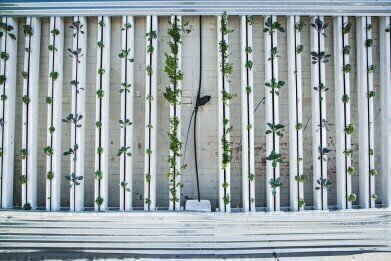Environmental Laboratory
What Is Vertical Farming?
Aug 19 2020
With the global population on the increase and climate change posing a threat to agricultural stability all across the world, food scarcity is a real concern in the foreseeable future. A planet with dwindling resources and a growing appetite is a difficult problem to solve, which is why the agriculture-water interface is so critical to the environment.
Fortunately, one novel method of farming may provide a solution to all of the above problems in one fell swoop. Vertical farming optimises resources by growing vegetables in stacked layers in a controlled environment, dispensing with the need for soil and using precision lighting and watering techniques to obtain the best yield. It also eliminates the unpredictability of weather patterns and reduces the amount of emissions in the supply chain.
Reimagining agriculture from top to bottom
Juggling concerns over climate change, carbon footprints, biodiversity and food security has been a difficult balancing act for the farming community. That’s why scientists have been working on a number of different ways in which the sector can curb its emissions and maximise its resources, including the use of engineered nanotechnology, drones, precision farming techniques and more.
Vertical farming is one such solution which grows herbs, leafy greens and other vegetables in vertical layers, thus taking up far less space than a traditional farm would. The indoor environment in which the crops are cultivated can also be controlled down to the exact degree and water, fertilisers and other nutrients can be distributed to the specific plants which need them, cutting down water consumption by as much as 95% and fertiliser use by 75%.
By relocating the crops indoors, the farmers also do not have deal with the vagaries of an ever-changing climate or the disruption caused by extreme weather events. What’s more, the practice is becoming more popular among retailers, meaning that the plants are grown instore. That reduces transportation costs and emissions, bringing down the crops’ carbon footprint significantly.
Vertical farming on the up
While the practice does hold a myriad of environmental and logistical benefits, it is an estimated three times more expensive than traditional farming techniques. However, its exponents believe that inflated price tag is well worth it when the advantages are taken into account – and several major supermarket chains appear to agree.
Marks & Spencer have partnered with German vertical farming firm Infarm to incorporate the technique into several of its London branches, while John Lewis has indicated it will be working alongside Bristol-based vertical farmers LettUs Grow to harvest salads grown instore. Meanwhile, online supermarket Ocado has ploughed £17 million into the venture as it seeks to make its business model more sustainable.
“We find that in recent years, investors from around the globe have been drawn to innovation that addresses the need for sustainable solutions to the challenges that affect our planet,” remarked Emmanuel Evita of Infarm. “Certainly these are challenges that many countries and regions are dealing with now, and they are becoming increasingly urgent for all of us.”
Digital Edition
IET 34.2 March 2024
April 2024
Gas Detection - Biogas batch fermentation system for laboratory use with automatic gas analysis in real time Water/Wastewater - Upcycling sensors for sustainable nature management - Prist...
View all digital editions
Events
Apr 22 2024 Hannover, Germany
Apr 22 2024 Marrakech, Morroco
Apr 23 2024 Kuala Lumpur, Malaysia
Apr 23 2024 Kintex, South Korea
Apr 23 2024 Edmonton, AB, Canada


















